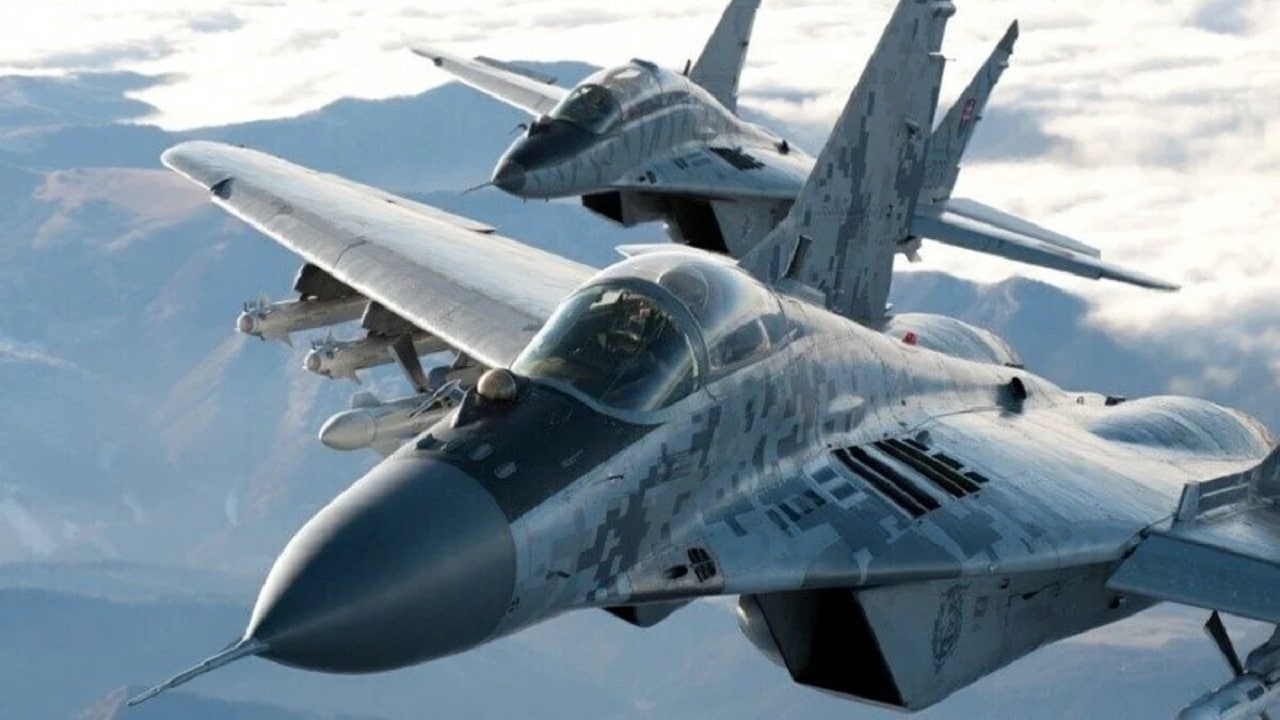More MiG-29 Fighters for Ukraine: How Much Can They Help? More Soviet-era MiG-29 fighter jets are headed from Warsaw, Poland to Ukraine to join the ongoing war for air superiority in the skies above Ukraine. The prospect of Western fighter jets, even Soviet-era fighters from Eastern Europe, has long been on the radar as key to Ukraine’s “wish list.” Not surprising, as the inability of either Russia or Ukraine to achieve air supremacy remains an ongoing mystery of this war.
Supremacy of the Skies
Russia’s inability to achieve air superiority remains perplexing, given that the country is listed on GlobalFirepower as having 773 fighter jets, compared to Ukraine’s 69. There are several key likely variables here, one is simply that Russia’s pilots are extremely risk averse, as was mentioned months ago by the Pentagon. Secondly, air defenses in Ukraine have continued to arrive and proven effective, meaning they may simply be keeping Russian fighters from operating above them. Perhaps the most likely reason was mentioned to me by a former high-level U.S. military official, and that is that Russia lacks the ability to successfully “network” air formations across enemy territory. An inability to distribute and coordinate target information and operate with sufficient command and control is clearly something likely to impede any kind of air attack effectiveness.
So the question then emerges as to whether the arrival of MiG 29s from Poland could actually push the balance in Ukraine’s favor. Perhaps. However, Russia is also known to operate some of the most advanced air defenses in the world and likely has them in large numbers blanketing key areas.
Air Defense
As far as it is known, the Ukrainians do not operate any stealthy aircraft capable of eluding or destroying these defenses. Russian-built S-400 and S-500 air defenses are increasingly networked into linked or “meshed” nodes across wide formations. They reportedly operate with advanced kinds of digital processing technology, greater ranges, and an ability to operate on a greater number of frequencies. Russia’s air defenses are also mobile, so they could travel as part of attacking armored formations to offer a protective air envelope.
The inability of Ukraine to establish air superiority is likely why there was such a pressing need for ground-based rockets such as HIMARS and Guided Multiple Launch Rocket Systems able to target and destroy Russian missile launchers. If Russian missile launch sites could not be reached from the air, then ground rockets with longer ranges than artillery offered the only way to destroy the launch sites from which Russian rockets were killing families, children, and civilians in residential areas.
Can the MiG-29 Make a Difference?
What will the MiG-29s bring? They could nevertheless still be impactful, however larger numbers of them would likely be needed to exact the desired effect.
The Drive quotes a senior Ukrainian official reporting that “several Polish (MiG-29s) have already arrived in Ukraine … According to my information, this process has already been completed. Of course, there will be talks about possible further support,” Marcin Przydacz, head of the Presidential Office of International Policy, told the Polish RMF FM radio station Monday, as quoted in the Drive.
Specs on the MiG-29, published in 2011 by Airforce-technology, show it could be quite impactful in supporting Ukrainian ground forces and potentially destroying Russian air assets such as drones, helicopters, and some fighter jets. The MiG-29 primarily carries rockets and surface-to-air weapons with some air-to-air possibilities as well. Alongside this payload, the specs also say that the MiG-29 can also function in a “bomb-truck” capacity and carry six 1,400 pound-bombs to attack from the sky.
Perhaps upgrades in subsequent years enabled this 1980s-era fighter jet to drop precision-guided bombs, however, that option may not have been available when the aircraft first took off in 1977. The MiG-29’s seven hard points are actually considerably less than the Su-27 fighter which operates with 10-hardpoints and flies at a Mach 2.3 speed, roughly equivalent between the aircraft.
The MiG-29 could also prove impactful in the air against Russian jets, depending upon the extent to which its sensors and targeting technologies have been upgraded. The MiG-29 operates with a thrust-to-weight ratio of 1.09.
Also, while the MiG is at most a 4th-generation aircraft, it has a more rounded and horizontal fuselage with the exhaust vents not protruding, which evades some detection if not entirely increases the stealth properties of the aircraft. In this case, electromagnetic pings from radar do not offer a high-fidelity return rendering. Radar signals cannot “bounce off” flat surfaces to effectively determine the size, shape, and speed of the aircraft.
The MiG-29, by contrast, has several rectangular-like protruding structures on the back of the aircraft, something much more likely to give radar “pings” something to bounce off of and return to deliver a “rendering” of the aircraft.
The largest and most pressing question, despite all of these variables, may simply be a question of numbers. Small numbers of MiG-29s could have an impact, however it seems there will need to be larger formations and greater air superiority for MiG-29s to “mass” and support Ukrainian forces on a counterattack against heavy Russian armored formations.
Kris Osborn is the Military Affairs Editor of 19FortyFive and President of Warrior Maven – Center for Military Modernization. Osborn previously served at the Pentagon as a Highly Qualified Expert with the Office of the Assistant Secretary of the Army—Acquisition, Logistics & Technology. Osborn has also worked as an anchor and on-air military specialist at national TV networks. He has appeared as a guest military expert on Fox News, MSNBC, The Military Channel, and The History Channel. He also has a Masters Degree in Comparative Literature from Columbia University.

